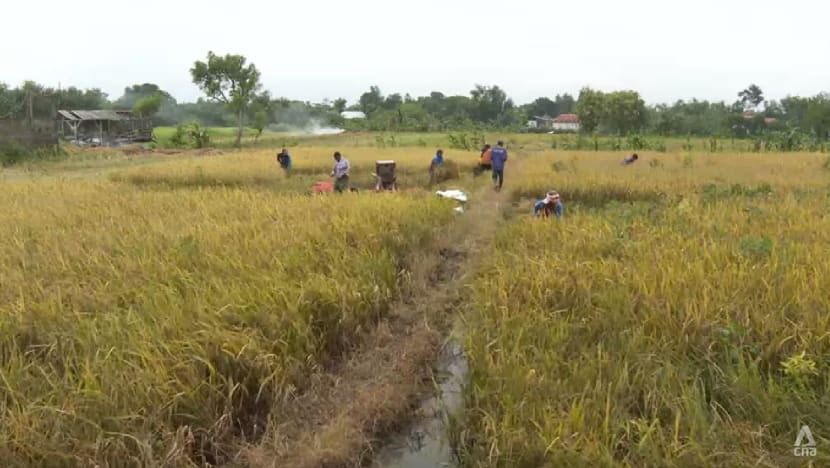Indonesia is Southeast Asia’s top rice producer, but fall in farmer numbers threatens viability
The country aims to produce 32 million tonnes of rice this year, a 3 per cent increase from last year.

Indonesia has emerged as Southeast Asia’s leading rice producer, overtaking traditional heavyweights Thailand and Vietnam.

This audio is generated by an AI tool.
BOGOR, Indonesia: Indonesia has emerged as Southeast Asia’s leading rice producer, overtaking traditional heavyweights Thailand and Vietnam.
The country aims to produce 32 million tonnes of rice this year, a 3 per cent increase from last year.
But the shrinking number of farmers has raised concerns about the long-term viability of the agriculture sector and its capacity to meet the nation’s growing food demands.
HISTORIC MILESTONE IN FOOD SECURITY
Indonesia has recorded a 48 per cent surge in rice production, with government rice reserves hitting a historic 4.2 million tonnes, said Indonesian President Prabowo Subianto last month.
However, challenges such as unequal land distribution and a perceived lack of support for farmers continue to hamper progress.
Farmers Isna and Caca, who go by one name like many Indonesians, work seven hours daily.
The husband-and-wife duo harvest about 1.2 tonnes of rice at least three times a year, selling their entire yield to factories. This earns them an annual income of about US$360.
Caca said she has never received any fertiliser or financial assistance, noting that getting such support would help with their daily meals.
Isna added: “The government should be able to help farmers. They should provide capital and also help to buy the unhusked rice, so that prices are standardised.”
To boost rice production, authorities have increased fertiliser subsidies, upgraded agricultural machinery, accelerated planting schedules, and raised the floor price of unhusked rice.
Despite these efforts, exports remain at bay for now as Indonesian officials prioritise maintaining domestic reserves and monitoring climate conditions.
FOOD SELF-SUFFICIENCY DRIVE
Observers said the big question is whether Indonesia can sustainably maintain its self-sufficiency.
Said Abdullah, national coordinator of the People's National Coalition for Food Security, said there is a need to consider the economic, social and environmental aspects of sustainability.
“If we want sustainable self-sufficiency, these three things are essential. They must be intact,” he added.
“Of course, they must be supported by strong policies that favour farmers and the agricultural sector.”
The number of farmers in Indonesia is declining, according to the country’s agricultural consensus.
Analysts said greater efforts are needed to make agriculture a more appealing livelihood.
Rajendra Aryal, country director for Indonesia and Timor Leste at the Food and Agriculture Organisation, noted that 80 per cent of the farmers in Indonesia are above 40.
“In 20 years’ time, they will be 60,” he said. “Unless and until we maintain that workforce on the farm, we cannot sustain the production.”
Government data showed that the number of farmers across all sub-sectors dropped from around 35 million in 2003 to 28 million in 2023.
With 17 per cent of farming households owning less than 0.5 hectares of land - and 15 million farmers focused on food crops, primarily rice - experts said Indonesia must improve farmer welfare if it hopes to sustainably feed its population of 280 million.


















